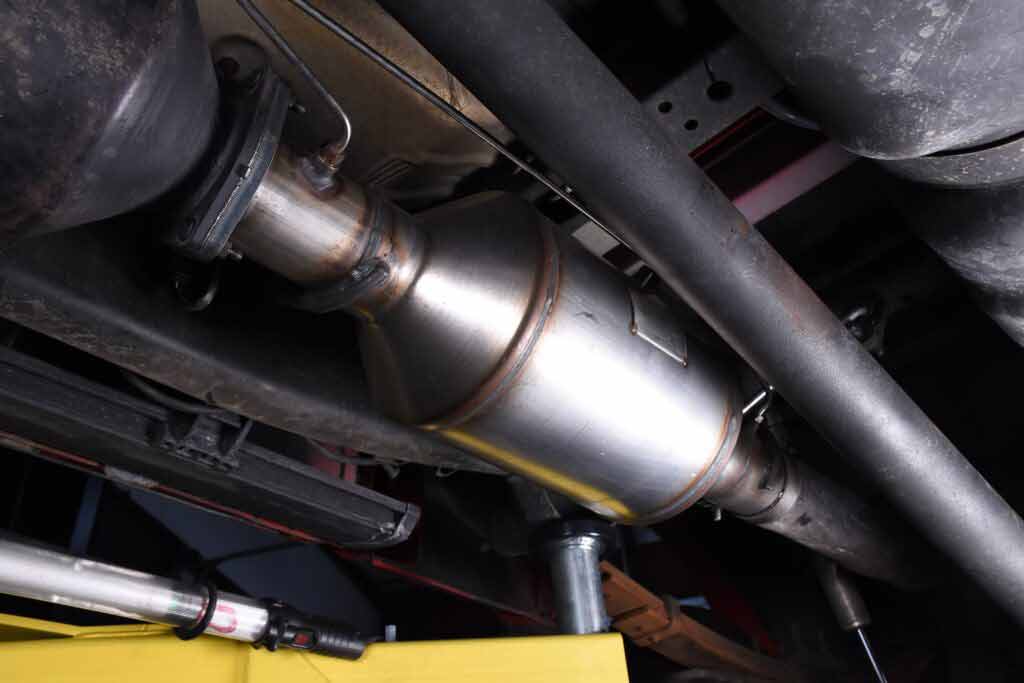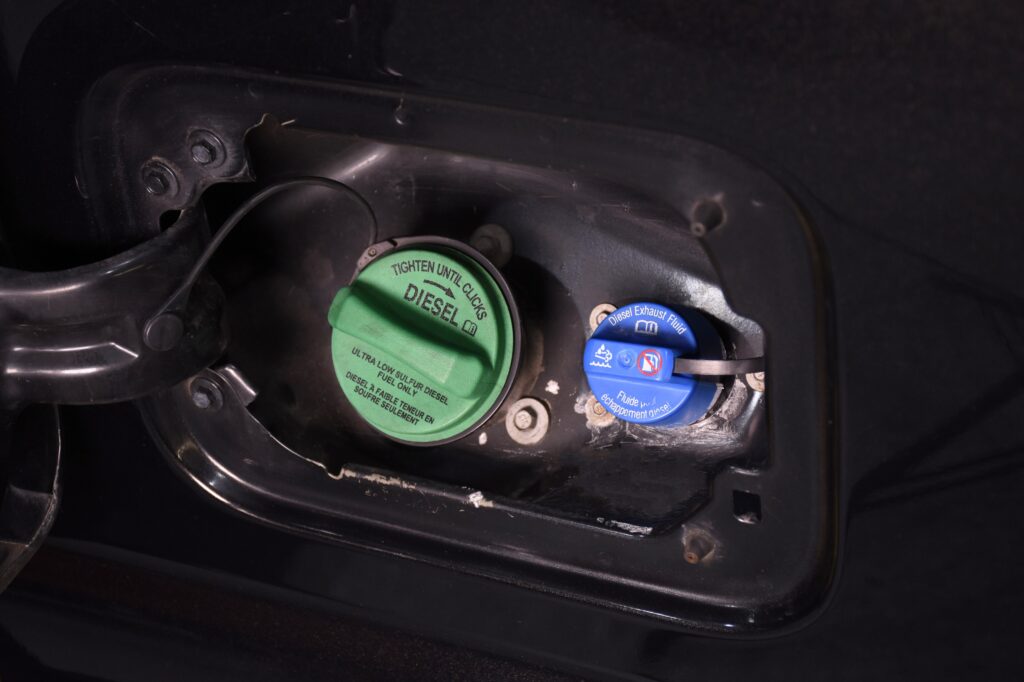
Starting in 2010 the Environmental Protection Agency began mandating the use of Selective Catalytic Reduction (SCR) in diesel engines. Read on as we take a closer look at Diesel Exhaust Fluid (DEF) and learn more how about it keeps diesel engines running clean and helps to protect the environment.
What is Diesel Exhaust Fluid (DEF)?
Diesel Exhaust Fluid (DEF) is a non-hazardous solution, which is made up of 32.5% urea and 67.5% de-ionized water. Urea is a compound of nitrogen that turns to ammonia when heated. It is used in a variety of industries, including as a fertilizer in agriculture. DEF is not a fuel additive and does not come into contact with diesel fuel. It is stored in a separate tank, typically with a blue filler cap.
What is Selective Catalytic Reduction (SCR)?
Selective Catalyst Reduction is not exactly a new technology despite only recently being mandated by the EPA. SCR technology basically uses a catalyst system to break down the dangerous NOx emissions into nitrogen and water. The exhaust gas from the engine is routed first through a particulate filter to help trap the soot and ash. From the particulate filter, the exhaust gas then travels downstream and gets sprayed with small quantities of DEF. The exhaust and DEF then enter the catalytic converter where the urea from the DEF and the exhaust gas react with a variety of metallic compounds. This converts nitrogen dioxide and monoxide into nitrogen and water. Nitrogen is the primary component of the air we breathe and is harmless to the environment. Water, of course, simply consists of Hydrogen and Oxygen.
It is not unlike the way a gasoline-powered car’s catalytic converter works (aside from the extra step of injecting urea). Most modern diesel engines use SCR in combination with exhaust gas recirculation (EGR) to reduce emissions.
How much DEF will my truck use?
Diesel Exhaust Fluid (DEF) consumption is measured as a ratio of diesel fuel use. This is normally termed the “treat rate” or “dosing rate.” Medium and heavy-duty vehicles have a dosing rate of 1-3%. This means that if your truck has a fuel efficiency of six miles per gallon and a dosing rate of 2% it will use approximately 1 gallon of DEF every 200 miles.
Another way to consider it is that DEF will generally be consumed on a 50 to 1 ratio with diesel. So for every 50 gallons of diesel fuel burned, you will use approximately 1 gallon of DEF.

Where is my DEF tank filler?
Most modern diesel vehicles position the filler opening for the DEF tank near the diesel fuel tank filler. It is typically right beside it to make it easy to find and refill. Some older vehicles may locate the DEF filler in the engine bay or elsewhere on the vehicle. So you don’t always see it when you pop the fuel door. You should consult your manual to find out where you need to look.
Where can I buy DEF?
DEF is available at many retailers in 1, 2.5, or 5-gallon containers. For fleet owners, it is also available in larger 55-gallon drums and larger totes. DEF is also available from the pump at a growing number of fuel stations and truck stops across the nation.
What happens if my truck runs out DEF?
The U.S. Environmental Protection Agency requires vehicle manufacturers to put measures in place to ensure that vehicles cannot run without Diesel Exhaust Fluid. Before a truck’s DEF tank runs empty the driver is given a series of alerts on their dashboard.
If the truck is allowed to completely run out of DEF, the engine’s power is normally reduced. A warning will be displayed, and many vehicles will actually run in limp mode until the DEF tank is refilled. Some vehicles will even prevent you from physically restarting the vehicle until the DEF tank has been filled.
Is there any danger of filling the DEF tank with diesel fuel?
A number of safeguards have been put in place to prevent confusion between Diesel and DEF filler necks. The standard nozzle diameter for DEF is 19mm, compared to 22 mm for Diesel Fuel. This helps to prevent the diesel nozzle from ever being inserted into the DEF tank. In addition, the tank cap for the DEF tank will be blue to further differentiate it.
The SCR system will typically recognize solutions other than DEF, and an indicator light will appear notifying the driver. Depending on the level of contamination in the tank the vehicle should not be driven any further until it has been properly serviced.
If DEF is filled into the diesel fuel tank, the engine will stop running almost immediately. The vehicle will need to be taken to the dealer or service center for repair.
What is the shelf life of DEF?
The shelf life of DEF is a function of ambient storage temperature. The shelf life can be up to two years if the maximum temperature does not exceed approximately 75°F (for an extended period). If stored between 10° and 90°F, the shelf life will be closer to one year. Storing DEF at a constant temperature of 95°F can reduce the shelf life to as little as 6 months. All DEF packaging should have a laser code or label with the expiration date listed.
Is DEF corrosive?
Diesel Exhaust Fluid (DEF) is a non-toxic, non-polluting, non-hazardous, and non-flammable solution. Of all the fluids used in a truck, such as diesel fuel, brake fluid, coolant, and washer fluid, DEF is probably the least hazardous. It is however corrosive for some metals such as carbon steel, aluminum, copper, and brass. Only approved materials, such as high-density polyethylene (HDPE), should be used for the storage of DEF.
What should I do if I spill DEF?
If you spill a small amount of Diesel Exhaust Fluid (DEF), it can be simply be wiped up. Larger spills can be collected with a non-combustible absorbent material such as sand or cat litter.
What is the freeze point of DEF?
A 32.5% solution of DEF will begin to crystallize and freeze at 12°F. At 32.5%, both the urea and water will freeze at the same rate. This ensures that the fluid does not become diluted, or over-concentrated as it thaws. The freezing and thawing of DEF will not cause degradation. DEF packaging and tanks are also designed to allow for expansion, as DEF can expand by approximately 7% when frozen.
If the DEF freezes on your vehicle, you typically do not need to take any action. Heating systems are incorporated by manufacturers to quickly return the DEF back to a liquid form. The operation of a vehicle will not be adversely impacted by cold weather.
Anti-gelling or cold weather additives should not be added to the DEF to prevent it from freezing. The 32.5% solution is very specific to providing NOx reducing properties. Blending or adjusting the DEF mixture can reduce its ability to operate correctly and can also cause damage to the SCR.
Does Selective Catalytic Reduction (SCR) affect an engine’s performance?
Selective Catalytic Reduction (SCR) is an after-treatment technology. This means that it deals with emissions without affecting or altering combustion conditions. Manufacturers keep improving their engine offerings year after year. They continue to raise the bar for horsepower and torque levels, so it is safe to say there have been no negative effects from SCR that have stunted the performance of diesel engines.
